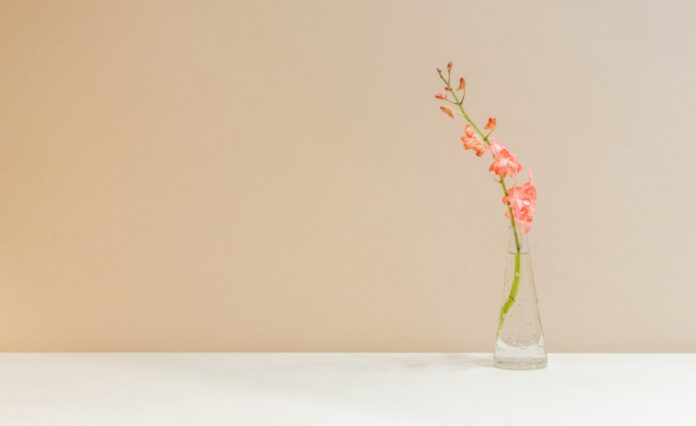[ad_1]
By Leo Babauta
Most of us live in about 8% of our body most of the time — the head. Even though we have a lot of body beneath the head, we forget about that most of the day.
We’re on our screens, doing work, consuming content, messaging. We’re distracted, worried, ruminating. We’re overthinking, building up a case against someone, or watching video after video.
There’s nothing wrong with this, it’s a very human thing. But what would it be like to live more fully in our bodies? We might call this, “Embodied Living.”
To live embodied means to:
- Notice when we’re caught up in our heads, and bring a mindful pause.
- Feel and appreciate the breath.
- Move the body, stretch it, appreciate it.
- Be more present in the moment, feeling the experience of the moment.
- Notice our surroundings more often, and be curious about them.
- Feel more alive, rather than stuck in thoughts.
- Act from the heart, instead of overthinking, and to trust those actions.
Things that help with being more embodied include meditation, yoga, breathwork, movement, awe walks, coaching, martial arts, and more.
But it can be hard to move from being in our heads most of the time … to being more embodied throughout the day. Let’s talk about how to do that.
The Embodied Pause
It’s always a good idea to start small. Let’s start with the Embodied Pause:
- Multiple times throughout the day … pause.
- Take in some breaths. Notice how the breath feels. Let yourself savor each in-breath, and let tension out with each out-breath.
- Stretch. Stretch your neck (gently), your shoulders, your jaw. Maybe the rest of your body too if you like. Let yourself release tension in these areas, and remember that you have a body.
- Ask yourself what you need. Do you need to move around? Take a break? Drink some water? Have some tea? Talk to a friend? This is a way of honoring your body’s needs.
It’s fairly simple and doesn’t have to take long. Notice if you’re resisting this — it’s common to want to skip past this because it feels too basic, or it interrupts whatever you were doing on a screen.
Practice this for a week. I promise it will have you feeling more embodied. It’s a great start!
Embodied Practices
Once you’ve practiced that pause for a week, you can choose one embodied practice at a time and add it in as an Embodied Pause. The more you practice, the more you’ll have the facility for this.
There are an infinite number of ways to practice, but here are some that I love:
- Breathe: Let yourself focus on your breath for a minute or two. Just sit and pay attention to the breath as it comes in and goes out. Savor the breath. Let yourself feel a connection through the breath to the outside world, to all living beings.
- Hydrate: Check to see if you’re thirsty. Take a break to get a drink, and savor the water. Like the breath, it connects you to the outside world — the world becomes a part of you. Feel the wonder of that.
- Eat: when you eat, let yourself actually pay attention to the experience of eating the food, instead of being distracted. Feel it nourishing you. Bonus: start asking what foods would nourish your body with nutrients.
- Act: Pause for a moment, and check in to see what action you are feeling called to take next.
- Squat: Get out of your chair, and simply squat down on the ground. This is how we humans rest, when we grow up in a natural environment — we simply squat on our haunches and hang out. But sitting in a chair for hours makes us inflexible, so squatting can feel uncomfortable to many people. So you can simply squat for 30 seconds or a minute (or longer if you like), and use it to focus on having a body.
- Stretch: Pick a stretch or two (look them up on Youtube if needed) and let yourself really enjoy the stretch. It relieves tension, has your body functioning better, and lets you remember you have a body that loves to be cared for.
- Hang: If you have a pullup bar, or something sturdy you can hang from, just grab onto the bar and let yourself hang for a few moments. Maybe 30 seconds. It’s a good way to strengthen your grip and shoulders, and helps other upper body exercises like the pullup.
- Dance: How often do you let yourself free to dance and enjoy movement to music? For many people, it’s very rarely. It’s a liberating thing, dance, and fun too!
- Meditate: Just about anywhere you are, you can pause for a minute or three and just sit still. Close your eyes if you like. Feel your breath and your body. Just experience stillness and the experience of being alive. Bring curiosity to what it feels like to have a body.
- Yoga: Find a few poses that you like, and drop onto the floor when you get a chance to practice. Yoga combines delicious stretching with meditation in a way that’s powerful for becoming embodied.
- Walk: Go for a walk, and feel your body moving through this world. It stimulates the mind, too, if you’re feeling stuck or dull.
- Wonder: As you walk, practice wonder. Can you find the feeling of awe at the world? What about awe for the body you have?
- Feel: Let yourself feel whatever emotions you’re feeling, but in the body instead of thinking about it. Feel it fully: fear, sadness, frustration, anger, heartbreak, grief, joy, love. Turn it up and let it be expressed in your body. The feeling won’t last forever, but this is a way of embodying emotions instead of stewing in the thoughts about them or repressing them.
I encourage you to find your own embodiment practices as well. But give these a shot!
How to Learn
I highly encourage you to pick one practice and focus on that for a few days, before adding another. You can learn multiple practices at once, but it’s hard to remember too many. If you choose one new one at a time, you’ll be able to set up reminders for it, give it your full attention, bring curiosity to practicing it.
Don’t worry about doing anything right. This is an exploration, a place of discovery, not having to do it right. If you forget to practice, or “do it wrong,” can you explore what that’s like? When you find yourself trying to do it right, can you free yourself to bring curiosity and play to the practice?
Reflecting on the practice helps. Journal about it, blog about it, talk to someone and share what you’re learning. This doubles the learning — you do the practice, then you reflect.
Let it be play. Let it be fun! Let it be a joyful exploration of being alive.
[ad_2]
zenhabits.net







